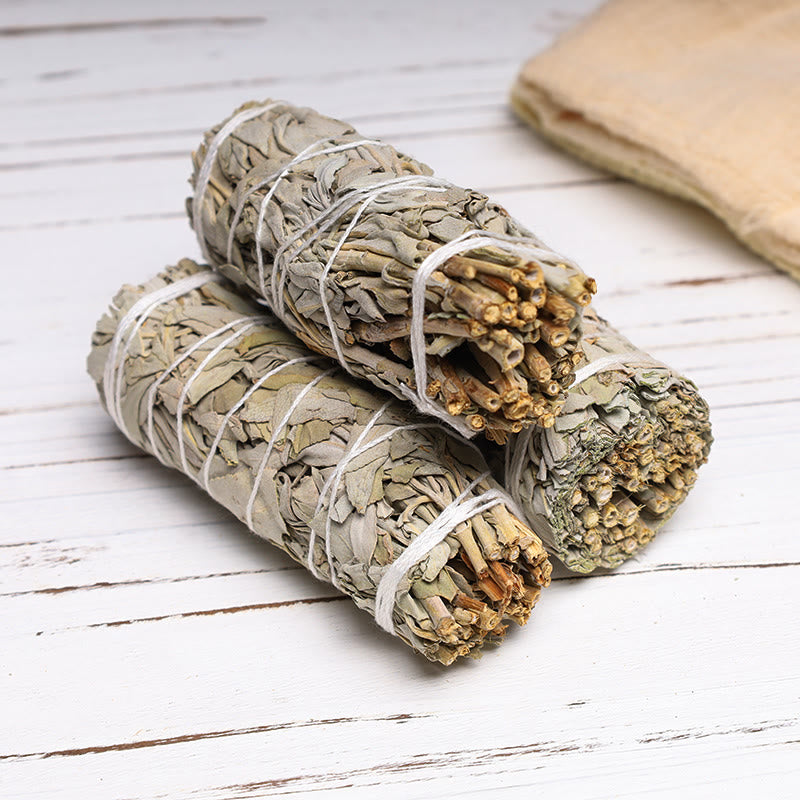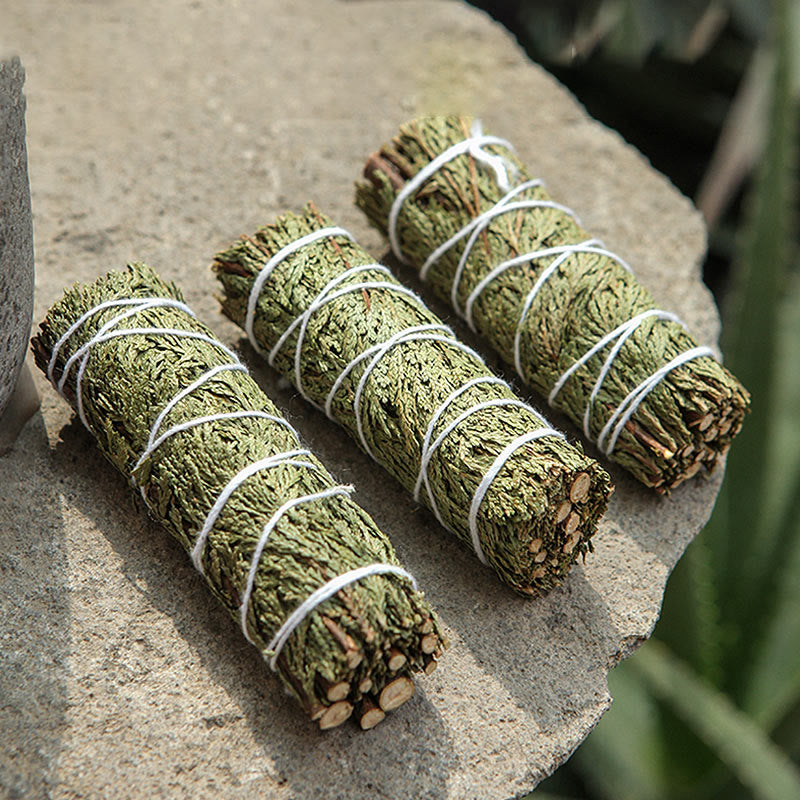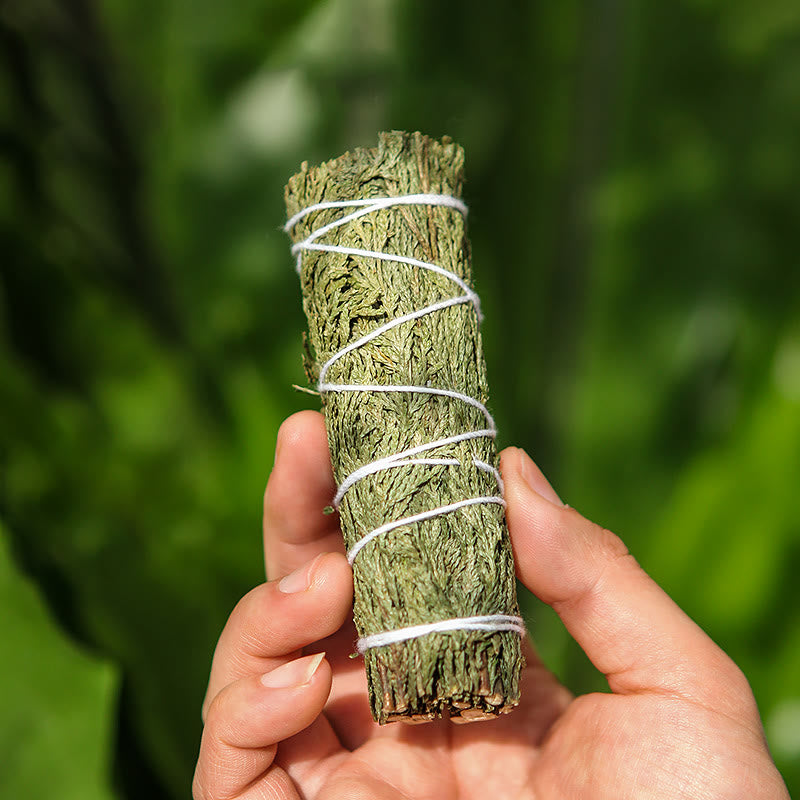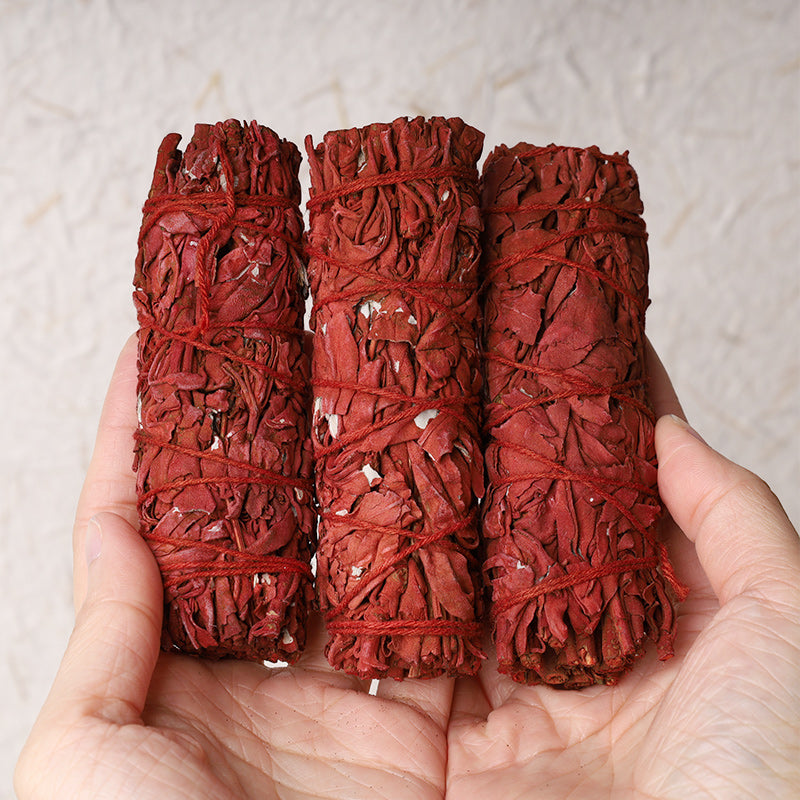Weihrauch vs. Salbei: Was ist der Unterschied bei der Reinigung?
Die Schaffung eines Rückzugsortes zu Hause beginnt oft mit der Reinigung der Luft – nicht nur physisch, sondern auch energetisch. Seit Jahrhunderten nutzen spirituelle Suchende den heiligen Rauch von Weihrauch und Salbei, um ihre Räume zu reinigen und ihre Stimmung zu heben. Beide sind zwar wirksame Mittel zur spirituellen Reinigung, dienen jedoch unterschiedlichen Zwecken und tragen einzigartige energetische Signaturen. Das Verständnis der Unterschiede ist entscheidend für die Wahl des richtigen Mittels für Ihre spezifischen Bedürfnisse, egal ob Sie Negativität vertreiben oder friedliche Schwingungen herbeirufen möchten.
Wenn Sie sich schon einmal gefragt haben, ob Sie zu einem Räucherstäbchen oder einem Räucherkegel greifen sollten, sind Sie nicht allein. Dieser Leitfaden beleuchtet die wesentlichen Unterschiede zwischen Weihrauch und Salbei, erkundet ihre kulturellen Wurzeln und hilft Ihnen, den perfekten aromatischen Verbündeten für Ihre Reinigungsrituale zu Hause zu finden. Tauchen Sie ein in die Welt des heiligen Rauchs und entdecken Sie, wie beides Ihren Raum verwandeln kann.
Die heilige Kunst des Räucherns: Salbei verstehen
Wenn Menschen von der Verwendung von Salbei zur Reinigung sprechen, meinen sie in der Regel das „Räuchern“, ein heiliges Reinigungsritual mit tiefen Wurzeln in den Traditionen der amerikanischen Ureinwohner. Weißer Salbei ( Salvia apiana ) ist das am häufigsten verwendete Kraut für diese Praxis. Sein Zweck besteht nicht nur darin, einen Raum angenehm duften zu lassen; er ist ein kraftvolles spirituelles Mittel, um negative oder stagnierende Energie aus einem Raum, einer Person oder einem Gegenstand zu verbannen .

Die Energie des Salbeis ist stark, reinigend und fast wie ein Reset-Knopf. Betrachten Sie es als eine tiefe spirituelle Reinigung. Der Rauch bindet sich an starke, negative Schwingungen und trägt sie weg, während er sich auflöst. Aufgrund seiner tiefen kulturellen Bedeutung ist es wichtig, das Räuchern mit Respekt und Absicht anzugehen. Es eignet sich am besten für:
- Reinigung eines neuen Hauses oder einer neuen Wohnung.
- Energiereinigung nach einem Streit oder einer Krankheit.
- Reinigung von Gebrauchtgegenständen oder Antiquitäten.
- Emotionalen Ballast aus einem Raum lösen.
Die Verwendung von Salbei ist ein aktiver Reinigungsprozess, der darauf abzielt, Dinge zu entfernen, die der Umwelt nicht mehr dienen, und so den Weg für Frieden und Klarheit zu ebnen.
Die aromatische Welt des Weihrauchs: Stimmung erzeugen
Weihrauch hingegen hat eine lange und vielfältige Geschichte, die sich über Kulturen auf der ganzen Welt erstreckt, vom alten Ägypten und Babylonien bis nach Indien und Japan. Es gibt ihn in vielen Formen – Stäbchen, Kegel, Harze – und er wird aus einer Kombination aromatischer Pflanzenmaterialien wie Harzen (Weihrauch, Myrrhe), Hölzern (Sandelholz, Adlerholz) und Kräutern hergestellt.
Während einige Räucherarten stark reinigende Eigenschaften haben, besteht ihre Hauptaufgabe oft darin, die Atmosphäre zu verändern und bestimmte Energien in einen Raum zu bringen . Anstatt nur Negativität zu vertreiben, hilft Räucherwerk, eine gewünschte Stimmung oder Absicht zu erzeugen. Es ist weniger ein tiefes „Peeling“, sondern eher eine kontinuierliche energetische Aufwertung. Räucherwerk ist ideal für:
- Verbessern Sie Meditation, Yoga oder Gebet.
- Fördert Entspannung und Ruhe.
- Fördert Kreativität und Konzentration.
- Sorgen Sie täglich für eine positive und schwingungsreiche Umgebung.
Verschiedene Düfte haben unterschiedliche Eigenschaften. Lavendel beispielsweise fördert die Ruhe, Sandelholz unterstützt die Meditation und Weihrauch eignet sich hervorragend für spirituellen Schutz und Reinigung. Diese Vielseitigkeit macht Weihrauch zu einem wunderbaren täglichen Hilfsmittel für ein achtsames Leben.
Weihrauch vs. Salbei: Ein direkter Vergleich zur Reinigung
Um wirklich zu verstehen, wann was angewendet werden sollte, ist es hilfreich, die wichtigsten Unterschiede zu verstehen. Obwohl beide Rauch als Medium für energetische Arbeit verwenden, sind ihre Ursprünge, Absichten und Wirkungen unterschiedlich.

Kulturelle und spirituelle Wurzeln
Salbei (Räuchern): Tief verwurzelt in den spirituellen Praktiken der indianischen Kulturen. Er ist ein heiliges zeremonielles Werkzeug zur Reinigung und Heilung. Seine Verwendung sollte stets mit Ehrfurcht vor seinen Ursprüngen erfolgen.
Weihrauch: Er kommt in unzähligen spirituellen Traditionen weltweit vor, darunter Buddhismus, Hinduismus, Taoismus und Christentum. Seine Verwendung ist global und an viele verschiedene kulturelle und religiöse Kontexte angepasst.
Primärer energetischer Zweck
Salbei: Bannend. Seine Hauptfunktion besteht darin, unerwünschte, negative oder stagnierende Energie zu entfernen. Er schafft Klarheit und neutralisiert die Umgebung.
Weihrauch: Einladend. Seine Hauptfunktion besteht darin, die Schwingung zu erhöhen und eine bestimmte, gewünschte Energie (z. B. Frieden, Liebe, Konzentration) einzuführen. Er baut auf der vorhandenen Energie eines Raumes auf.
Wann welches Werkzeug verwendet werden soll
Stellen Sie sich das so vor: Salbei ist für den „großen Putz“ gedacht, während Weihrauch für die tägliche „Pflege und Verschönerung“ sorgt. Vielleicht räuchern Sie Ihr Zuhause einmal im Monat oder nach einem wichtigen Ereignis mit Salbei, aber Sie könnten jeden Morgen Weihrauch anzünden, um Ihren Tag mit einer positiven Absicht zu beginnen.
So wählen Sie das richtige Reinigungswerkzeug für Ihr Ritual
Die Wahl zwischen Weihrauch und Salbei hängt letztendlich von Ihrer Absicht ab. Fragen Sie sich: „Was ist mein Ziel für diesen Raum?“ Ihre Antwort führt Sie zum richtigen Werkzeug.
Wählen Sie Sage, wenn Sie Folgendes benötigen:
- Führen Sie einen tiefen energetischen Neustart Ihres Zuhauses durch.
- Klare Negativität nach einer schwierigen Erfahrung.
- Reinigen Sie einen neuen Raum, bevor Sie einziehen.
- Spüren Sie, dass die Energie um Sie herum schwer, dicht oder feststeckend ist.
Wählen Sie Weihrauch, wenn Sie:
- Schaffen Sie eine bestimmte Stimmung für Meditation, Kreativität oder Entspannung.
- Sorgen Sie täglich für eine lockere, positive Atmosphäre.
- Laden Sie Energien wie Liebe, Fülle oder Schutz ein.
- Verleihen Sie Ihrem Alltag eine gewisse Heiligkeit.
Letztendlich schließen sich diese Mittel nicht gegenseitig aus, sondern ergänzen sich. Sie können eine Tiefenreinigung mit Salbei durchführen und anschließend Räucherstäbchen verbrennen, um den frisch gereinigten Raum mit positiver, bewusster Energie zu füllen.
[Sammlungs-Schieberegler]
Räucherstäbchen aus weißem Salbei für Reinigungs- und Meditationsrituale zu Hause
$10.90 $15.90
Reinigen Sie die Energie Ihres Zuhauses und fördern Sie die Meditation mit diesem authentischen Räucherstäbchen aus weißem Salbei für eine tiefe spirituelle Reinigung.
Produkt entdeckenDurchführung eines einfachen Reinigungsrituals
Egal, ob Sie sich für Salbei oder Weihrauch entscheiden, das wichtigste Element jedes Reinigungsrituals ist Ihre Absicht . Nehmen Sie sich vor Beginn einen Moment Zeit, um sich zu konzentrieren und sich klarzumachen, was Sie erreichen möchten. Untersuchungen haben sogar gezeigt, dass der medizinische Rauch beim Räuchern wissenschaftlich erwiesenermaßen Bakterien in der Luft reduziert und so neben der spirituellen auch eine körperliche Reinigungswirkung bietet.

- Legen Sie Ihre Absicht fest: Formulieren Sie Ihr Ziel klar, z. B. „Ich lasse alle Energie frei, die nicht meinem höchsten Wohl dient“ oder „Ich lade Frieden und Liebe in dieses Zuhause ein.“
- Bereiten Sie Ihren Raum vor: Öffnen Sie ein Fenster oder eine Tür, um der alten Energie (und dem Rauch) einen Weg nach draußen zu ermöglichen.
- Zünden Sie Ihr Räucherwerkzeug an: Halten Sie die Spitze Ihres Salbeibündels oder Räucherstäbchens an eine Flamme, bis sie Feuer fängt, und blasen Sie sie dann vorsichtig aus, sodass sie glimmt und Rauch erzeugt. Verwenden Sie eine feuerfeste Schale, um die Glut aufzufangen.
- Bewegen Sie sich durch den Raum: Beginnen Sie an Ihrer Haustür und bewegen Sie sich im Uhrzeigersinn durch Ihr Haus. Bewegen Sie den Rauch sanft in alle Ecken, Schränke und Fenster und behalten Sie dabei Ihre Absicht im Hinterkopf.
- Sicheres Löschen: Sobald Sie fertig sind, drücken Sie das glimmende Ende Ihres Salbeis oder Weihrauchs fest in Ihre feuerfeste Schale oder Ihren Sand, bis es vollständig erloschen ist. Lassen Sie es niemals unbeaufsichtigt.
Vertrauen Sie Ihrer Intuition. Lassen Sie den Prozess zu einer bewegten Meditation werden, die Sie wieder mit Ihrem Zuhause und Ihrem inneren Selbst verbindet.
Entdecken Sie leistungsstarke Reinigungstools
$18.90
$27.90
Nutzen Sie das erdige Aroma und die reinigende Kraft der Zeder, um Ihren heiligen Ort heute zu erfrischen und spirituell zu schützen. Mehr erfahren ➔
$17.90
$25.90
Kombinieren Sie Salbei und Drachenblutharz für eine kraftvolle Energiereinigung – verwandeln Sie Ihren Raum mit Reinigung und Schutz. Mehr erfahren ➔
Fazit: Zwei Wege zu einem heiligen Ort
Sowohl Weihrauch als auch Salbei bieten tiefgreifende Wege zu einem achtsameren und energetisch klareren Zuhause. Der Schlüssel zum Erfolg: Sie sind nicht austauschbar, sondern kraftvolle Verbündete mit unterschiedlichen Stärken. Salbei ist Ihr Mittel zur tiefen Reinigung und zur Beseitigung von Negativität und schafft so einen Neuanfang. Weihrauch ist Ihr Werkzeug zur täglichen Verbesserung der Atmosphäre, lädt bestimmte positive Energien ein und gibt den Ton für Ihre spirituelle Praxis an.
Wenn Sie die einzigartigen Gaben der Salbeipflanzen verstehen, können Sie sich ein vielseitiges spirituelles Werkzeugset zusammenstellen. Nutzen Sie die reinigende Kraft des Salbeis, wenn Sie einen Neustart brauchen, und den sanften, erhebenden Duft von Weihrauch, um jeden Tag eine schöne, heilige Atmosphäre zu bewahren. Vertrauen Sie Ihrer Intuition, ehren Sie die Traditionen hinter diesen Werkzeugen und genießen Sie die Ruhe, die ein bewusst gereinigter Raum mit sich bringt.
Häufig gestellte Fragen zu Weihrauch und Salbei
Der Hauptunterschied liegt in ihrem Zweck. Salbei wird verwendet, um negative oder stagnierende Energien zu vertreiben. Dies geschieht durch das sogenannte Räuchern; es ist eine tiefe spirituelle „Reinigung“. Weihrauch hingegen dient in erster Linie dazu, positive Energien zu aktivieren und eine bestimmte Stimmung oder Absicht wie Ruhe, Konzentration oder Entspannung zu erzeugen. Stellen Sie sich Salbei als Reinigung der Leinwand vor, und Weihrauch als Malerei darauf.
Für eine gründliche Reinigung – beispielsweise nach einer Krankheit oder in einem neuen Zuhause – gilt Salbei im Allgemeinen als wirksamer, um intensive negative Energie zu vertreiben. Bestimmte Räucherwerksorten mit reinigenden Harzen wie Weihrauch, Kopal oder Palo Santo können jedoch auch für eine leichtere, regelmäßige Reinigung und die Aufrechterhaltung eines klaren Raums sehr wirksam sein. Die Wirksamkeit hängt von der Intensität der zu reinigenden Energie ab.
Sie sollten Salbei verwenden, wenn Sie das Bedürfnis nach einem kraftvollen energetischen Neustart verspüren. Entscheiden Sie sich für Salbei, wenn Sie in ein neues Zuhause ziehen, nach einem Konflikt oder einem negativen Ereignis, beim Reinigen gebrauchter Gegenstände oder immer dann, wenn sich die Energie in Ihrem Raum besonders schwer, stagnierend oder negativ anfühlt. Verwenden Sie ihn, wenn Sie Energie entfernen müssen, nicht nur, wenn Sie sie hinzufügen.
Ja. Das Räuchern von Salbei ist ein heiliges Ritual der indigenen Kulturen Amerikas. Die Wahl von Salbei verbindet Sie mit dieser besonderen Tradition der tiefen Reinigung. Es ist wichtig, ihn mit Respekt und Ehrfurcht vor seinen Ursprüngen zu verwenden. Räucherwerk wird weltweit verwendet, hat einen vielfältigeren kulturellen Hintergrund und ist nicht an eine bestimmte Tradition gebunden. Dadurch ist es ein universelleres Mittel zur Schaffung einer Atmosphäre auf verschiedenen spirituellen Pfaden.
Eine gründliche Reinigung beginnt mit einer klaren Absicht. Öffnen Sie zunächst ein Fenster. Zünden Sie Ihr Salbeibündel oder Räucherstäbchen an, bis es glimmt. Verwenden Sie eine feuerfeste Schale, um die Asche aufzufangen. Bewegen Sie sich im Uhrzeigersinn durch den Raum und lassen Sie den Rauch sanft in alle Ecken wehen, während Sie sich auf Ihre Absicht konzentrieren (z. B. „Ich lasse alle Negativität los“). Sobald Sie fertig sind, löschen Sie das glimmende Ende sicher im Sand oder in Ihrer Schale.







